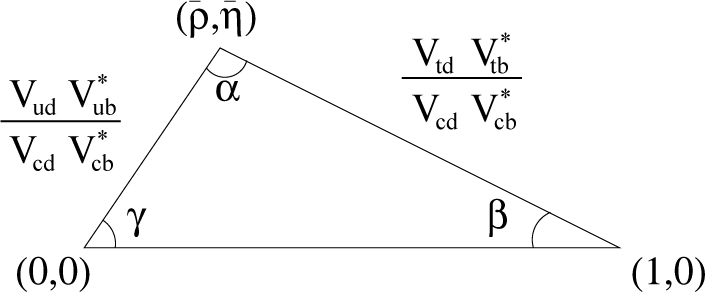
The Nobel Prize for Physics in 2008 was split between three theoretical particle physicists. Two of the recipients, Makoto Kobayashi and Toshihide Maskawa were awarded the prize for their work on
"the discovery of the origin of the broken symmetry which predicts the existence of at least three families of quarks in nature".Quarks are a sub-set of the fundamental particles that exist in nature. The significance of the work by Kobayashi and Maskawa was that by introducing additional quarks which had not been experimentally observed at that time, they were able to introduce a tiny difference between matter and antimatter to theory that was known to exist in nature. This tiny difference is called CP Violation and is related to how the early universe evolved into its present matter dominated state. The BaBar experiment at the Stanford Linear Accelerator Center is one of two experiments that confirmed the theory of Kobayashi and Maskawa (called the CKM mechanism). Physicists from QMUL's Particle Physics Research Center who work on the BaBar experiment have spent many years performing tests of the CKM mechanism. The work led by Dr A Bevan has resulted in the two most precise direct independent tests, and the work led by Dr F Di Lodovico has produced one of the most precise indirect tests of this theory. A more technical description of the tests performed by the QMUL BaBar group is given below.




The UT Fit and CKM Fitter groups compile up-to-date world averages of measurements of parameters and constraints on the CKM matrix, except for Vub and Vcb where the averages are compiled by the Selmi-Leptonic sub-group of the Heavy Flavor Averaging Group.
[1] M. Kobayashi and T. Maskawa, Prog. Theor. Phys 49, 652 (1973).
[2] N. Cabibbo, Phys. Rev. Lett. 10, 531 (1963).
[3] alpha measurement: B. Aubert et al., Phys. Rev. D. 76, 052007 (2007).
Dr A Bevan and Dr K A George of QMUL's Particle Physics Research Centre collaborated with scientists,
CEA Saclay and SLAC on this analysis.
[4] beta measurement: B. Aubert et al., [hep-ex] arXiv:0808.1903 (2008).
Dr A Bevan of QMUL's Particle Physics Research Centre collaborated with scientists from Caltech,
UC Irvine, Maryland on this analysis.
[5] Vub measurement: B. Aubert et al., PRL 100 171802 (2008).
Dr di Lodovico, Dr R. Sacco and Mr C. Clarke of QMUL's Particle Physics Research Centre collaborated
with scientists from Ferrara, LBNL, and Valencia on this analysis.